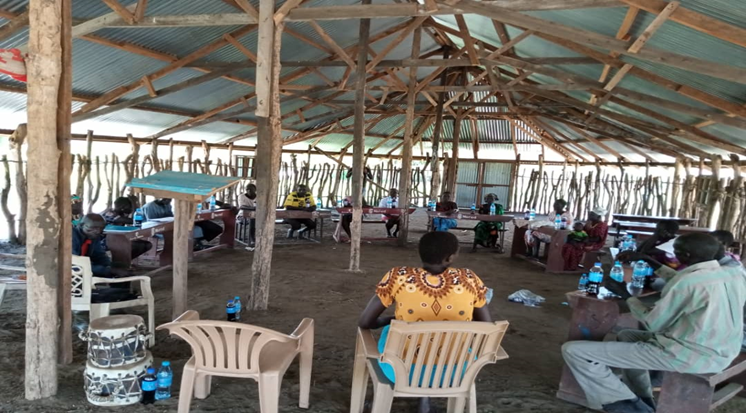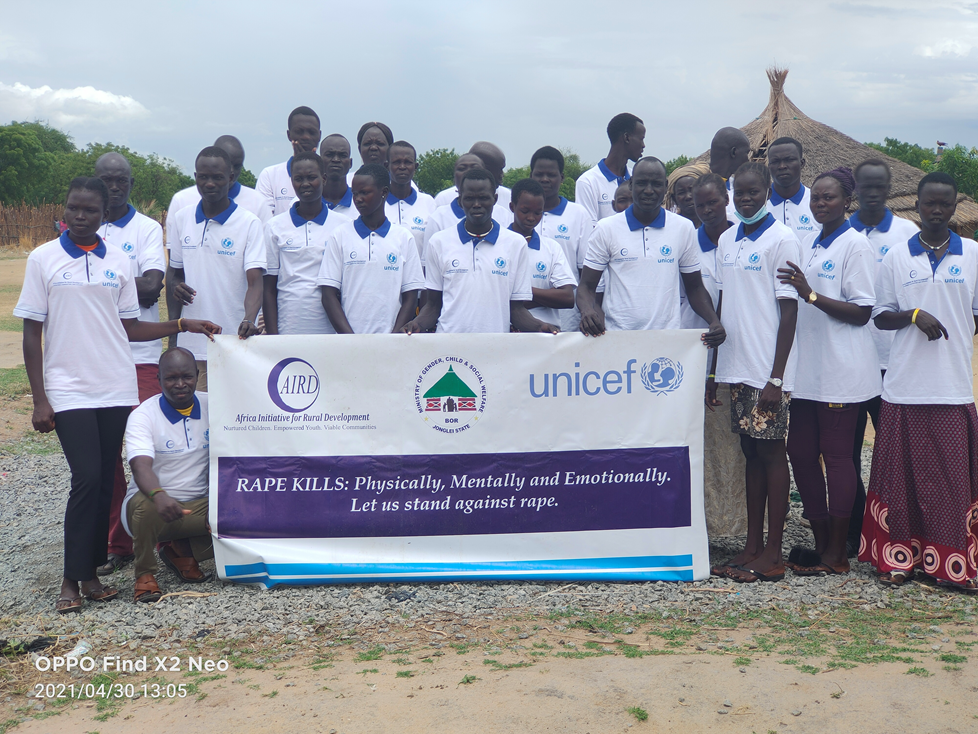Our Programs


AIRD plans to achieve its expressed vision and mission through the following key programs and initiatives:
Child protection
To address child protection needs in any situation, AIRD will ensure;
- Girls and boys are protected from harm, injury and disability caused by physical dangers in their environment and the physical and psychosocial needs of injured children are responded to in a timely and efficient way.
- Girls and boys are protected from physical violence and other harmful practices, and survivors have access to age-specific and culturally appropriate responses.
- Girls and boys are protected from sexual violence and survivors of sexual violence have access to age-appropriate information as well as a safe, responsive and holistic response.
- Girls’ and boys’ coping mechanisms and resilience are strengthened and severely affected children are receiving appropriate support.
- Girls and boys are protected from recruitment and use in hostilities by armed forces or armed groups, and are released and provided with effective reintegration services.
- Girls and boys are protected from the worst forms of child labor, in particular those related to or made worse by the emergency.
- Family separation is prevented and responded to, and unaccompanied and separated children are cared for and protected according to their specific needs and their best interests.
- All girls and boys who come into contact with the justice systems as victims, witnesses or alleged offenders are treated in line with international standards.
Gender Based Violence (GBV)
AIRD is commited to the following actions at different levels to prevent and respond to GBV.
- Providing information on referral services to survivors and those at risk of abuse
- Providing survivor case management; establishing survivor-centred psychosocial support mechanisms
- Implementing appropriate protection and safety mechanisms and ensuring survivors’ access to legal aid and services
- Supporting women’s economic, political and social empowerment
- Establishing women’s centres or other women-friendly spaces
- Establishing and coordinating integrated GBV response and referral systems; developing SOPs
- Identifying and mobilizing community leadership to advance women’s rights and promote services for GBV survivors
- Establishing local data collection systems and information-sharing protocols
- Developing the capacity of local women’s rights organizations and structures and other civil society actors to support women’s economic, political and social empowerment
- Ensuring compliance with relevant international laws and standards
- Training key stakeholders and actors with national influence on human rights, women’s rights, GBV, etc.
- Monitoring rights violations and implementing national-level protective strategies
- Assessing and identifying areas for legal and policy reform; advocating, allocating resources and providing technical support to enable that reform
- Supporting use of aggregate, analyzed data for national and global advocacy
Food Security and Livelihood:
Food security and Resilience of IDP, returnees and host communities have sustainably improved by ensuring that:
- Poor vulnerable households and their families benefit from nutrition sensitive agriculture practices to improve and diversify their income and diets and hence reduce malnutrition
- Efficiency of potential agro-business and value chains improved as alternative and complementary livelihood strategies through trainings, start-up inputs and capital and linkage to potential markets
- Communal assets rehabilitated, accessed and utilized sustainably
- Youth’s employability and economic status improved through opportunities for skills development, and support to gain access to sustainable employment and livelihood opportunities.
- Pastoral livelihood assets protected and milk availability for children improved.
- Youth entrepreneurship and enterprise in sectors with the greatest potential created through provision of start-up tools/equipment or materials and credit grantee
- Strengthening the capacity of TVET centers and private institutions.
Nutrition:
We to ensure Prevalence of Acute malnutrition and stunting reduced.
- Mortality and morbidity of under-five children reduced through increased and equitable access to and utilization of nutrition services (Acutely malnourished children have access to adequate treatment)
- Improved maternal, infant and young child feeding practices among PLW and caretakers through effective behaviour change communication interventions.
- Capacity of nutrition sites strengthened for provision of quality CMAM and IYCF services
- Promotion of nutrition sensitive interventions strengthened
Health:
Educating children and youth on reproductive health, deadly diseases, mental health, and drugs abuse by;
- Provides knowledge about sexual and reproductive health
- Provides sexuality and HIV education programmes that address gender and power intimate relationship
- Medical care: provide medical care service in collaboration with state hospital and payams health centres
- Health education: this will improve the status of health and nutrition and promote adoption of good menstruation hygiene practices amongst adolescent girls and women of child bearing age.
- Engage and empowere individuals and communities to choose healthy behaviors, and make change
- Seek out, evaluate, promote and distribute quality health promotion/disease prevention programs by providing appropriate quality care and reducing the rate of healthcare inflation
Water, Sanitation and hygiene:
AIRD WASH services will prioritize areas with: highest IPC and GAM rates; highest GBV risks (in relation to protection risks) and highest incidence of cholera/disease outbreaks. These will be achieved through:
- Supporting children admitted for SAM/MAM treatment with a WASH minimum package of activities at household level (HWTS treatment for CFR > 0.2mg/l [PUR and/or Aquatab], soap with hand washing promotion)
- Ensuring target population provided with access to safe water as per agreed standards (7.5-15 litres of water per person per day) with cattle consideration (small stock water requirements, cattle ODF promotion)
- community water points constructed in secure and accessible location as agreed in focus group discussions conducted by female staff with women and girls
- Consultation with women and Girls through focus group discussions with support from female staff to ensure Latrines with locks (or equivalent device, depending on the context- inside for users) and design improvement (intimacy/security).
- Ensuring vulnerable population provided with access to safe water at collective water point as per agreed standards (7.5-15 litres of water per person per day, CFR > 0.5mg/l if outbreak, such as bucket chlorination)
- Provision of vulnerable population with a WASH minimum package of activities at public places, gathering/events/funerals and intra-domiciliary levels (jerrycan, soap with hand washing promotion, [bucket or household] water treatment for CFR > 0.5mg/l if outbreak [PUR and/or Aquatab])
Education:
- Providing underprivileged, hard to reach children and youth with access to basic educational opportunities.
- AIRD aims to support vulnerable children to complete primary education and transition to secondary school and tertiary institutions.
- Besides, enabling girls to realize their educational potential, it will also contribute to delaying the age of marriage, improving family planning and lowering maternal mortality, given the well established relationship between maternal mortality and a mother’s possession of a secondary school education.
Justice and Peace:
In order to achieve this strategic goal, five stretagic orientations were identified as follows.
- Establish and Strenghten Justice and Peace department.
- Community Peace Dialogues, Reconcilition and Healing.
- Cros-border Peace Animation
- Strengthening Boma Councils
- Civic Education
Advocacy:
AIRD mission in advocacy is to create a society that is fair and just, where the needs and interests of vulnerable/marginalised individuals or groups are represented and addressed through:
- Lobby (attempt to influence) government to adopt or amend laws and policies;
- Provide input on laws and policies through research and data collected through service provision, consultation with communities and other means;
- Hold governments accountable for failing to comply with their legal duties;
- Assist government to implement laws and policies;
- Present the needs and concerns of marginalised groups of people to government and broader society.
